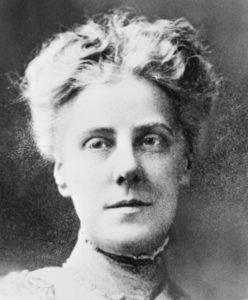Origins of this day remain disputed with regards to who first started it. Here’s a look back at the personalities, instrumental for Mother’s Day.
Celebration of womanhood can be found in ancient Greek and Roman cultures. Powerful mother goddesses, Rhea and Cybele were worshipped and festivals were held in their honour. In classical Greek antiquity, Rhea was regarded to be the mother of Olympian gods and goddesses. In Roman mythology, Cybele was a healer, warrior and the goddess of fertility.
Much later, the church would also honour motherhood. This day would be celebrated on the fourth Sunday in Lent (Laetare Sunday), a time when the faithful would return to the “mother church” within their homes.
Later, it would become secular in spirit. Flowers, gifts and cards became symbols of appreciation.
Ann R. Jarvis was a social activist of the American Civil War era. She was instrumental in starting “Mother’s Day Work Clubs” – women were taught about good parenting. They worked towards reducing the infant mortality rates and improve sanitary conditions for mothers and children.

The women would tend to wounded soldiers from both sides. Their anti-war stance was seen not only in their work; in 1868, Jarvis organised “Mothers’ Friendship Day”. Mothers promoted post-war reconciliation in a country that stood divided, following the constitutional abolition of slavery, better known as the Thirteenth Amendment to the United States Constitution. Former Union and Confederate soldiers often joined them.
Abolitionist and suffragette, Julia Ward Howe wrote the “Mother’s Day Proclamation” to promote world peace as a reaction to American Civil War and the Franco-Prussian War (1870-71). It was a call to all mothers to unite for this cause. She campaigned for “Mother’s Peace Day”, celebrated on June 2.
But it was Juliet Calhoun Blakely whose seemingly minor action in a church service set this day in motion. Following the sudden departure of the pastor due to a family emergency, she took over the pulpit and completed the service, thus, earning the respect of her community members. Her sons were so touched that they vowed to pay tribute to her, on her birthday, every year. During their travels as salesmen, they urged people to honour their mothers on the second Sunday of May.
Frank Hering, regarded to be the “Father of Mother’s Day”, popularized the day in USA.
In 1904, he gave a speech that marked the first public plea to honour all mothers. Four years later, Anna Jarvis held a ceremony for her mother. A departmental store owner in Philadelphia, John Wanamaker, supported her with financial backing.
She chose to remain unmarried; her mission was to see the day in the national calendar. She started a letter writing campaign, arguing how American holidays celebrated male achievements. She would go on to establish the “Mother’s Day International Association” for this cause.
1914 saw this day being observed as an official US holiday, signed by President Woodrow Wilson.
With time, the day became commercialised, thus, going against the original vision of Anna Jarvis, who saw it as a day of personal celebration within families.
She denounced its transformation as floral and confectionary business ventures, in the form of an open campaign against the mass profiteering. This alienated the powerful charities, who once supported her.
Before her death in 1948, she disowned the holiday and lobbied to see it removed from the American calendar. Her life ended in economic hardship and she died all alone in the Marshall Square Sanatorium on November 24th.
Ironically, people connected with the floral and greeting card industries paid her medical bills.



